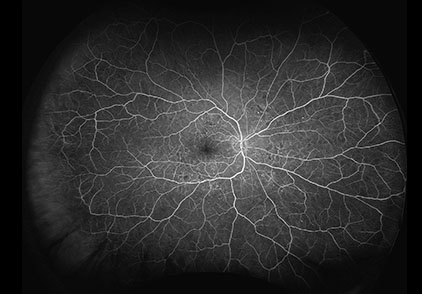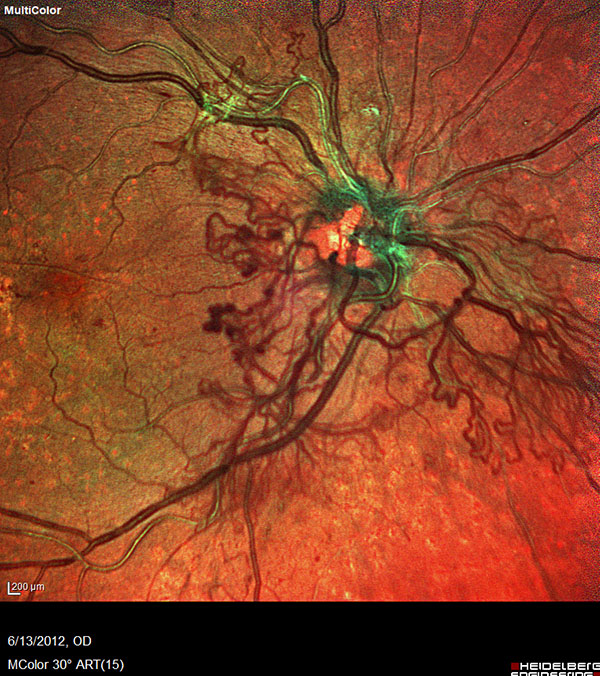Request an Appointment
(703) 719-2040

Diabetes is a complex metabolic disorder that impairs the body’s ability to produce or use insulin effectively to regulate blood sugar levels. Unfortunately, over time elevated blood sugar levels can cause damage throughout the body with many complications to one’s health and overall wellbeing. Diabetes contributes to the development of heart disease, stroke, kidney disease, eye problems, nerve impairment, and medical issues in the extremities.
Diabetic retinopathy is a complication of diabetes that causes damage to the blood vessels of the retina— the light-sensitive tissue that lines the back part of the eye, allowing you to see fine detail. While initially, you may not experience any symptoms, the complications of diabetic retinopathy can lead to severe vision problems and even blindness.
Symptoms
Symptoms of diabetic retinopathy may occur in one or both eyes, and may include:
Background diabetic retinopathy, also known as non-proliferative diabetic retinopathy, offers an early, visible sign of small blood vessel disease. However, since the tiny aneurysms and hemorrhages that characterize this early stage may not produce noticeable vision changes, many diabetics remain unaware of an advancing disease process. Yet, once background diabetic retinopathy gets detected, it elevates the risk for more severe damage and vision loss.
When damaged blood vessels leak fluid into the retina, it results in a condition known as diabetic macular edema, which causes swelling in the center part of the eye (macula) that provides the sharp vision needed for reading and recognizing faces.
Prolonged damage to the small blood vessels in the retina results in poor circulation to the retina and macula prompting the development of growth factors that cause new abnormal blood vessels (neovascularization) and scar tissue to grow on the surface of the retina. This stage of the disease is known as proliferative diabetic retinopathy (PDR).
New vessels may bleed into the middle of the eye, cause scar tissue formation, pull on the retina, cause retinal detachment, or may cause high pressure and pain if the blood vessels grow on the iris, clogging the drainage system of the eye—all of this can cause vision loss.

For people with diabetes, regular dilated eye exams are essential for early detection and the prevention of vision loss. In addition to scheduling a comprehensive dilated eye exam and controlling your blood sugar levels, it’s critical to pay close attention to any changes in your vision. Contact our office right away if you notice any sudden fluctuations or if your vision becomes spotty, blurry, or hazy. Our retina specialist can look for signs of diabetes or diabetic retinopathy before any vision loss has occurred.
If you have diabetes, the National Eye Institute (NEI) suggests that you keep your health on track:
As a result of major, randomized clinical trials, there are many approved treatments for diabetic retinopathy, including intravitreal injections (small injections of medications into the middle cavity of the eye), laser treatments, and vitreous and retina surgery. These procedures can be done in an office or hospital setting to prevent, treat, or reverse damage from diabetes in the retina.
It is extremely important for diabetic patients to maintain the eye examination schedule put in place by the retina specialist. How often an examination is needed depends on the severity of your disease. Through early detection, our retina specialist can begin a treatment regimen to preserve your vision.

